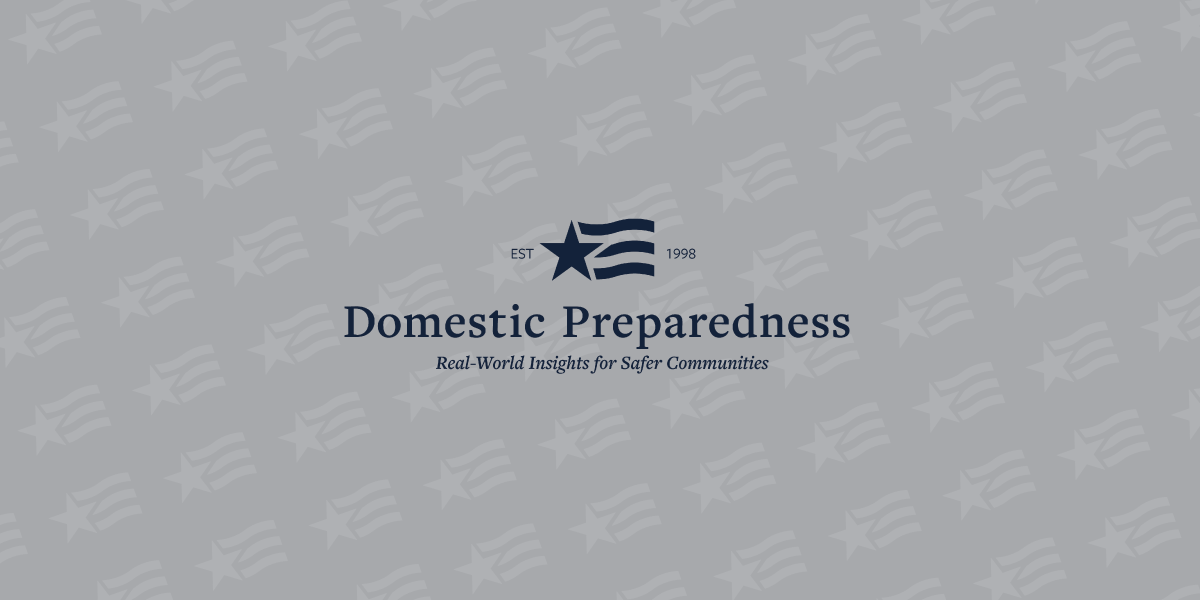- Articles, Emergency Management, Emergency Medical Services, Hospitals, Public Health
- Joseph Cahill
The term “resilience” refers to the capacity to return to equilibrium after a displacement of some type. When faced with an overwhelming disaster, a system, agency, or community cannot achieve true resilience if it is not already resilient in carrying out its day-to-day operations.
Resilience plays a key operational role on a daily basis and, for that reason, must be integrated into the everyday fabric of how staff conducts business so that resilience strategies are automatically implemented as an almost reflex action. These common smaller-scale challenges, repeated often enough, will enhance overall operational effectiveness – before, during, and after a crisis.
The Key Factor: Multi-Level Resiliency
To achieve true resiliency, efforts must be made at every level of an organization – from the individual EMT (Emergency Medical Technician) to the department or agency assigned operational responsibility to that agency’s decision-making officials and other community leaders. Every EMT and Paramedic within the system should develop the individual discipline needed of planning for the possible failure of each piece of equipment that is used. By constantly thinking through a “Plan B” for each equipment item, system, or other working tool, the on-scene responder should be able to smoothly implement that plan if and when the equipment actually does fail.
Taking this principle to a higher level, agency and community leaders also must make important decisions well in advance – and those decisions should be based on more than simple politics and/or budgetary considerations. Here the most obvious example is purchasing decisions, which in the modern marketplace involve not only the type of product – a stretcher system, for example – but also the specific brand and model that would best fit the community’s needs.
In far too many instances, unfortunately, the final but invisible “arbitrator” for the product selected is the price of that product. This practice often puts the agency, and individual responder, in a less desirable resiliency position. Obviously, cost and funding decisions cannot be avoided in the decision-making process. However, by including an additional step in that process to review the impact on resilience capabilities before purchasing an equipment item might, in the long run, save more than just money. It also might help to save lives.
Advance Planning on Purchases – And Pooling Resources
Continuing the stretcher system example, several important questions that can help build greater resilience during the purchasing process include the following:
- Are the parts interchangeable with the current legacy system?
- Will members of the line staff have to be re-trained on the new system – and, if so, what would the training cost?
- Will the new system interface smoothly and effectively with existing systems, devices, and other ancillary equipment?
The answers to these and other questions that might be asked not only dictate the pace of upgrade that is possible, but will also control, to at least some degree, the system’s ability to press legacy equipment into service during future times of crisis. For these and other reasons, it will sometimes be advantageous to override a decision that is based solely on the initial purchase price of a product.
Here it must be emphasized that, in order to revise the current procurement system, the budgetary and political leaders involved must fully understand the legitimacy of the resilience factors that should also be considered. And educating those decision-makers is not always an easy job.
Backup Plans, Geographical Factors & “As Needed” Policies
Even something as simple as the disbursing of spare resources has a resilience component. Spare resources within a system allow for expansion during a crisis and/or other times of increased daily call volume. These extra resources also act as a backup – in the Plan B mentioned earlier – for the replacement of failed equipment during routine daily operations. For example, in situations where a station is geographically isolated from the rest of the system – on an island or other area with limited access, for example – that location should be provided, in advance, the additional supplies and equipment likely to be needed to ensure that weather and/or other circumstances and conditions do not create an inability to function both quickly and effectively.
In today’s difficult economic climate, of course, many Emergency Medical Systems simply do not have the financial resources needed to purchase and/or store additional caches of equipment at every station. To address this concern, a true system-wide plan would permit the deployment of such resources to various locations and jurisdictions on an “as needed” basis.
The bottom line is that resilience is not just another planning tool that can be simply dusted off during a disaster and put safely back on the shelf until the next major crisis occurs. It is, rather, an unavoidable operational stance that must be adopted every day – by everyone involved – and in every decision.

Joseph Cahill
Joseph Cahill is the director of medicolegal investigations for the Massachusetts Office of the Chief Medical Examiner. He previously served as exercise and training coordinator for the Massachusetts Department of Public Health and as emergency planner in the Westchester County (N.Y.) Office of Emergency Management. He also served for five years as citywide advanced life support (ALS) coordinator for the FDNY – Bureau of EMS. Before that, he was the department’s Division 6 ALS coordinator, covering the South Bronx and Harlem. He also served on the faculty of the Westchester County Community College’s paramedic program and has been a frequent guest lecturer for the U.S. Secret Service, the FDNY EMS Academy, and Montefiore Hospital.
- Joseph Cahillhttps://domprep.com/author/joseph-cahill
- Joseph Cahillhttps://domprep.com/author/joseph-cahill
- Joseph Cahillhttps://domprep.com/author/joseph-cahill
- Joseph Cahillhttps://domprep.com/author/joseph-cahill






